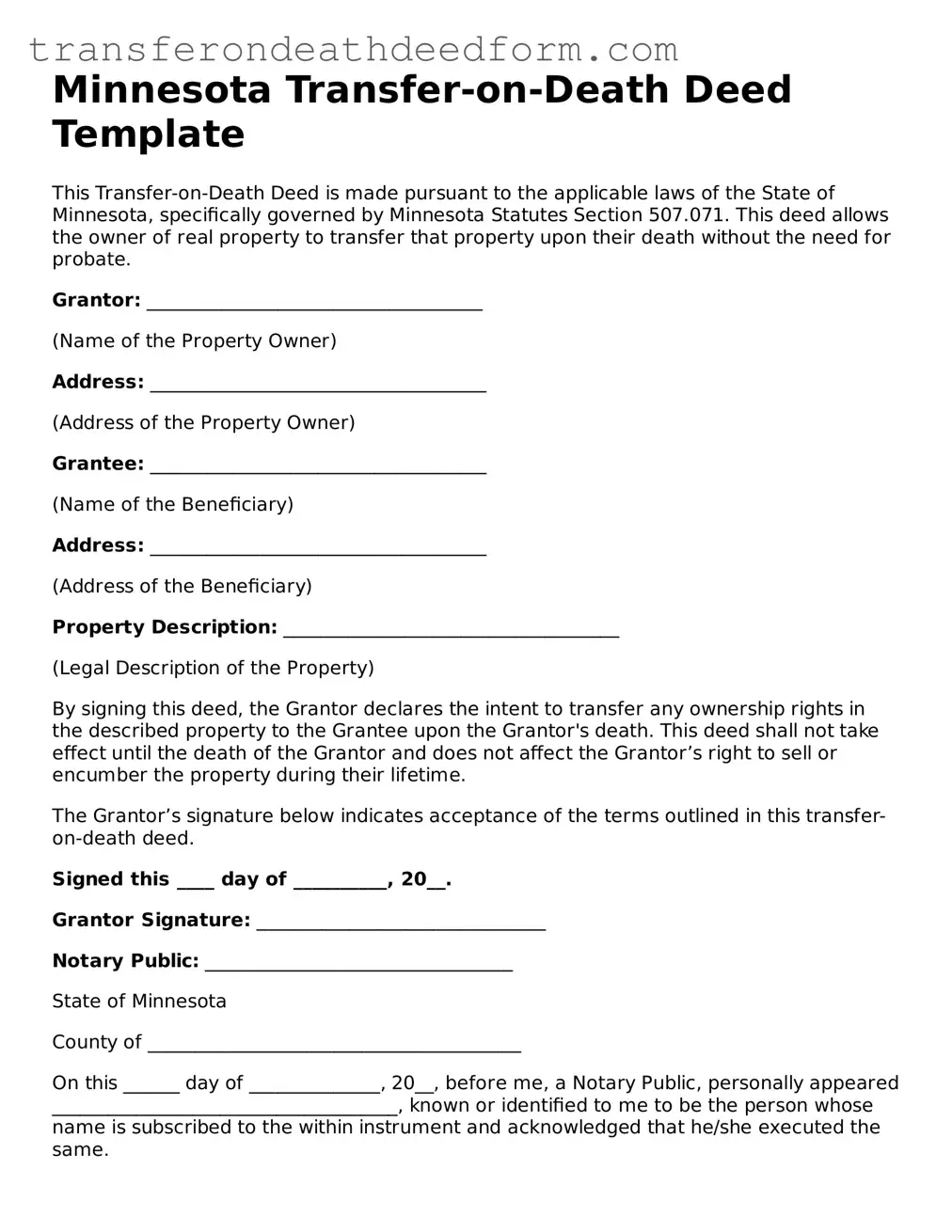Minnesota Transfer-on-Death Deed Template
This Transfer-on-Death Deed is made pursuant to the applicable laws of the State of Minnesota, specifically governed by Minnesota Statutes Section 507.071. This deed allows the owner of real property to transfer that property upon their death without the need for probate.
Grantor: ____________________________________
(Name of the Property Owner)
Address: ____________________________________
(Address of the Property Owner)
Grantee: ____________________________________
(Name of the Beneficiary)
Address: ____________________________________
(Address of the Beneficiary)
Property Description: ____________________________________
(Legal Description of the Property)
By signing this deed, the Grantor declares the intent to transfer any ownership rights in the described property to the Grantee upon the Grantor's death. This deed shall not take effect until the death of the Grantor and does not affect the Grantor’s right to sell or encumber the property during their lifetime.
The Grantor’s signature below indicates acceptance of the terms outlined in this transfer-on-death deed.
Signed this ____ day of __________, 20__.
Grantor Signature: _______________________________
Notary Public: _________________________________
State of Minnesota
County of ________________________________________
On this ______ day of ______________, 20__, before me, a Notary Public, personally appeared _____________________________________, known or identified to me to be the person whose name is subscribed to the within instrument and acknowledged that he/she executed the same.
Given under my hand and notarial seal this ____ day of ___________, 20__.
Notary Seal:
_______________________________
